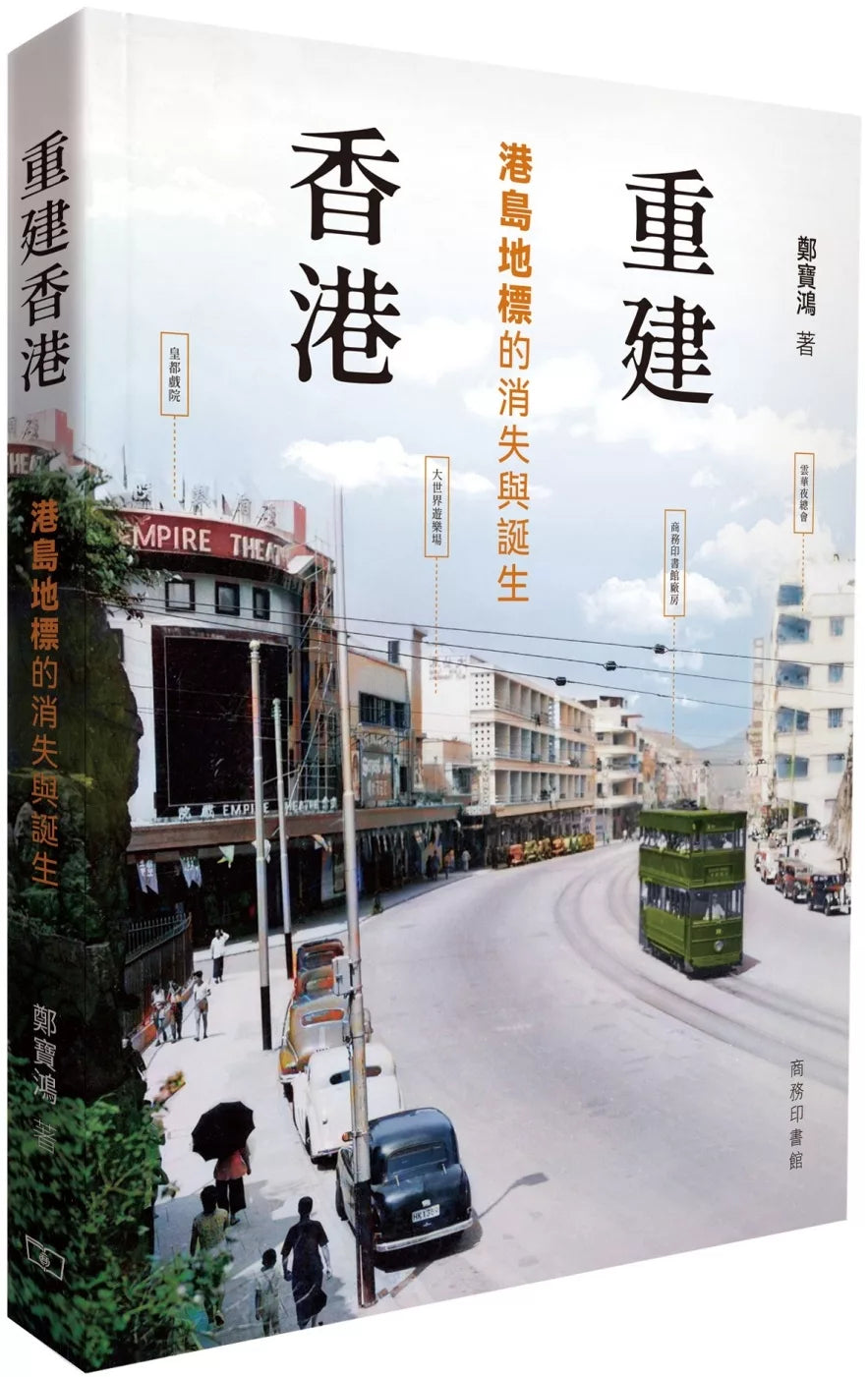1
/
of
1
Rebuilding Hong Kong
Rebuilding Hong Kong
Zheng Baohong
Regular price
$44.99 USD
Regular price
Sale price
$44.99 USD
Unit price
/
per
Low stock
Couldn't load pickup availability
About Book
About Book
Follow the landmarks and witness the transformation of Hong Kong Island over the past century
Cheng Po-hung, Consultant of the Hong Kong Museum of History, shares with you the details of Hong Kong's urban transformation.
Hong Kong's urban landscape has undergone countless cycles of reclamation, demolition, and redevelopment to meet development needs, continuously transforming its cityscape. The first reclamation in Central occurred in 1841, leading to the construction of landmark buildings such as the City Hall, the new General Post Office, and Exchange Square. Central and Sheung Wan have evolved over the years to become high-end commercial districts integrating consumer and dining options.
Wan Chai, once known as "Shan Pai," encompassed Sun, Moon, and Star Streets. Since the 1990s, it has transformed into an upscale residential area and the Lan Kwai Fong leisure district. The adjacent Wedding Invitation Street has also been transformed into a pedestrian mall offering dining, shopping, and leisure activities. Around 1950, the Xuan Gong (Royal Court) and the Metropole Cinema opened in North Point, bringing the area's prosperity to a level comparable to that of Causeway Bay today.
The sugar refinery, paint factory, and dockyard of Taikoo & Co. in the Eastern District were gradually converted into private commercial and residential buildings starting in the mid-1960s. The opening of the South Island Line in 2019 has made transportation in the Southern District much more convenient. Meanwhile, the renowned Jumbo Seafood Boat sank in the South China Sea in 2022.
Hong Kong's cityscape is constantly changing. This book uses 250 images to track landmarks and witness the transformation of Hong Kong Island over the past century.
Cheng Po-hung, Consultant of the Hong Kong Museum of History, shares with you the details of Hong Kong's urban transformation.
Hong Kong's urban landscape has undergone countless cycles of reclamation, demolition, and redevelopment to meet development needs, continuously transforming its cityscape. The first reclamation in Central occurred in 1841, leading to the construction of landmark buildings such as the City Hall, the new General Post Office, and Exchange Square. Central and Sheung Wan have evolved over the years to become high-end commercial districts integrating consumer and dining options.
Wan Chai, once known as "Shan Pai," encompassed Sun, Moon, and Star Streets. Since the 1990s, it has transformed into an upscale residential area and the Lan Kwai Fong leisure district. The adjacent Wedding Invitation Street has also been transformed into a pedestrian mall offering dining, shopping, and leisure activities. Around 1950, the Xuan Gong (Royal Court) and the Metropole Cinema opened in North Point, bringing the area's prosperity to a level comparable to that of Causeway Bay today.
The sugar refinery, paint factory, and dockyard of Taikoo & Co. in the Eastern District were gradually converted into private commercial and residential buildings starting in the mid-1960s. The opening of the South Island Line in 2019 has made transportation in the Southern District much more convenient. Meanwhile, the renowned Jumbo Seafood Boat sank in the South China Sea in 2022.
Hong Kong's cityscape is constantly changing. This book uses 250 images to track landmarks and witness the transformation of Hong Kong Island over the past century.
Publication Date
Publication Date
2023-07-01
Publisher
Publisher
商務印書館(香港)有限公司
Imprint
Imprint
Pages
Pages
260
ISBN
ISBN
9789620759482
share

